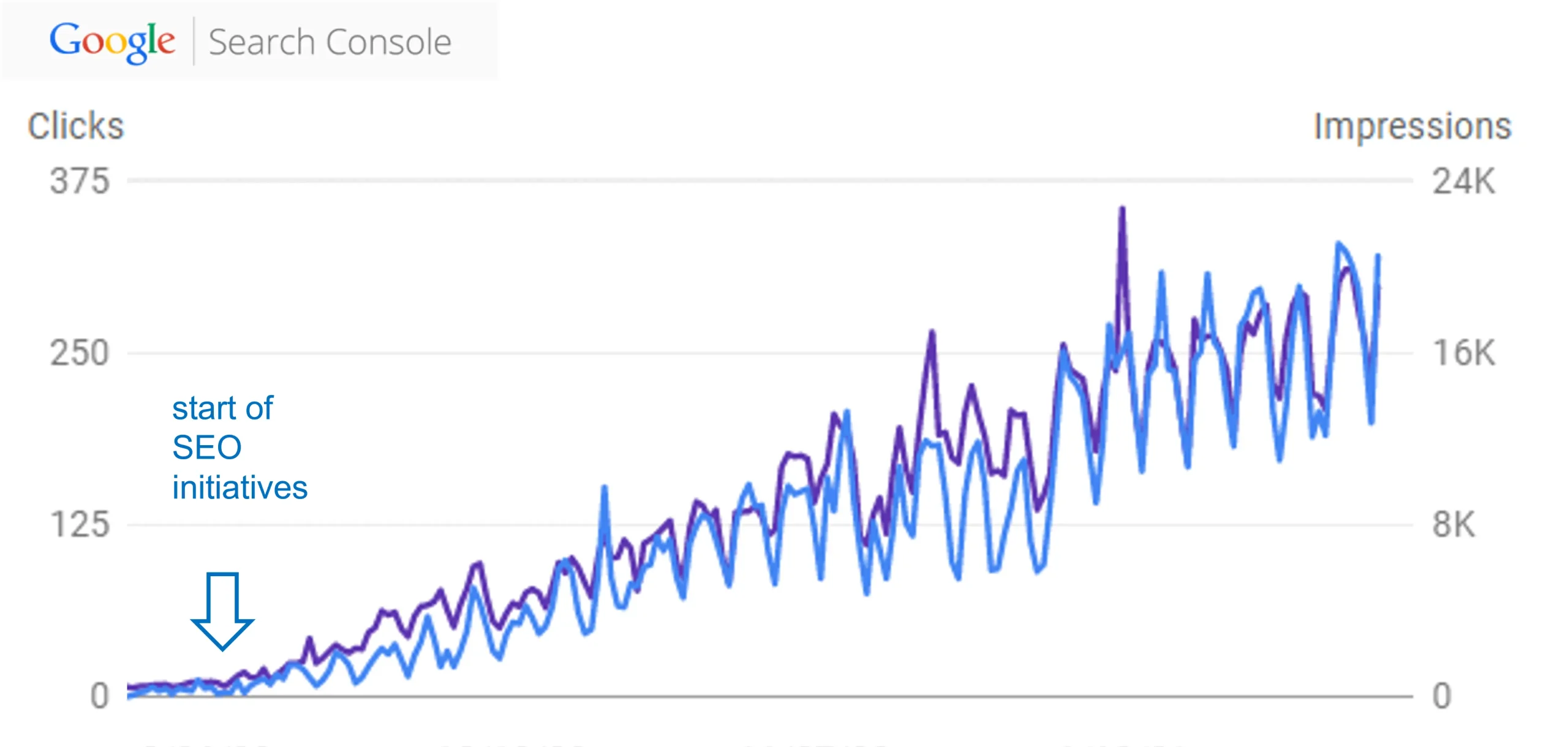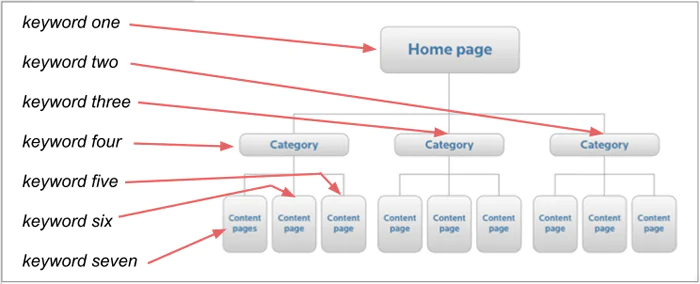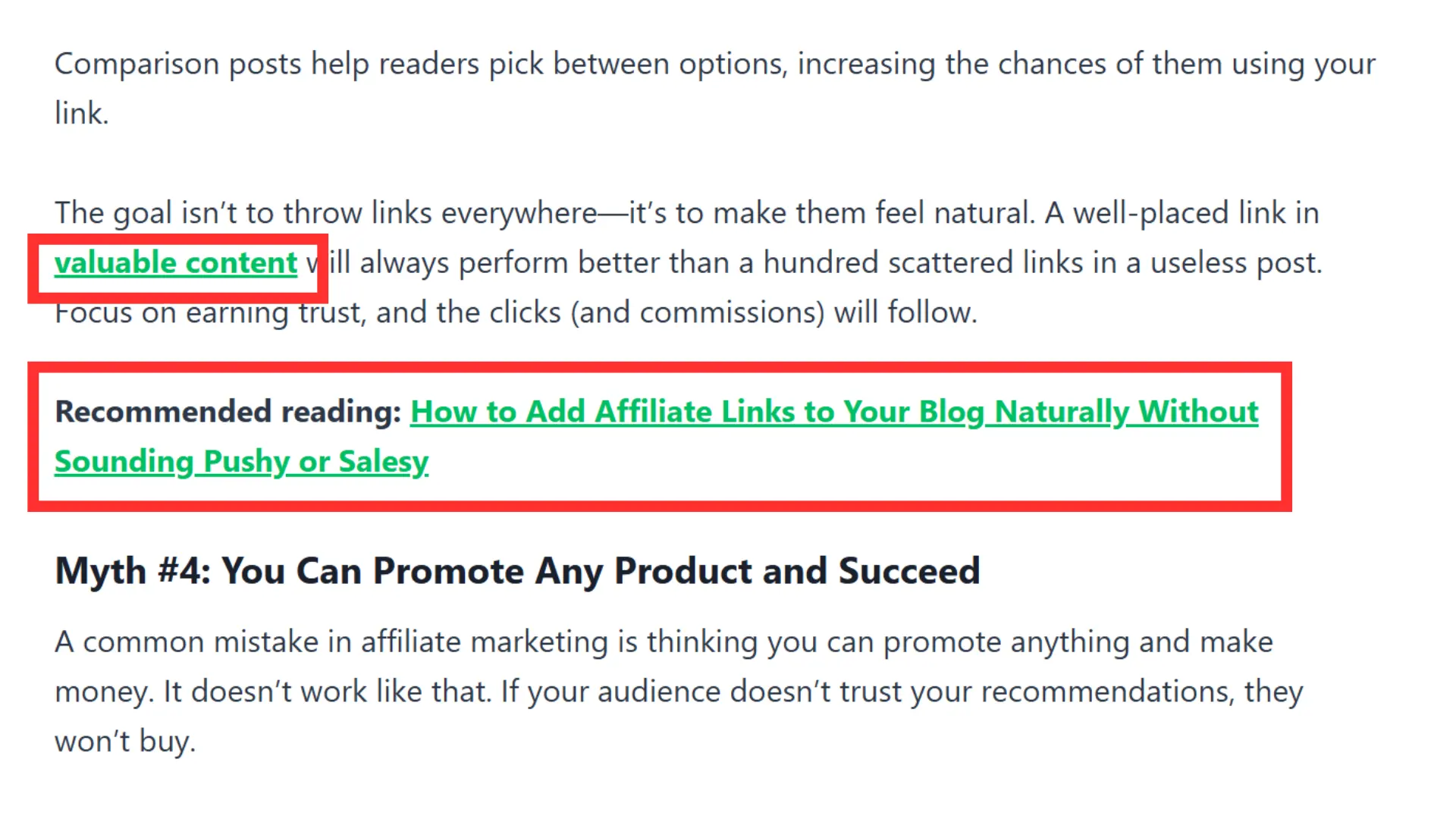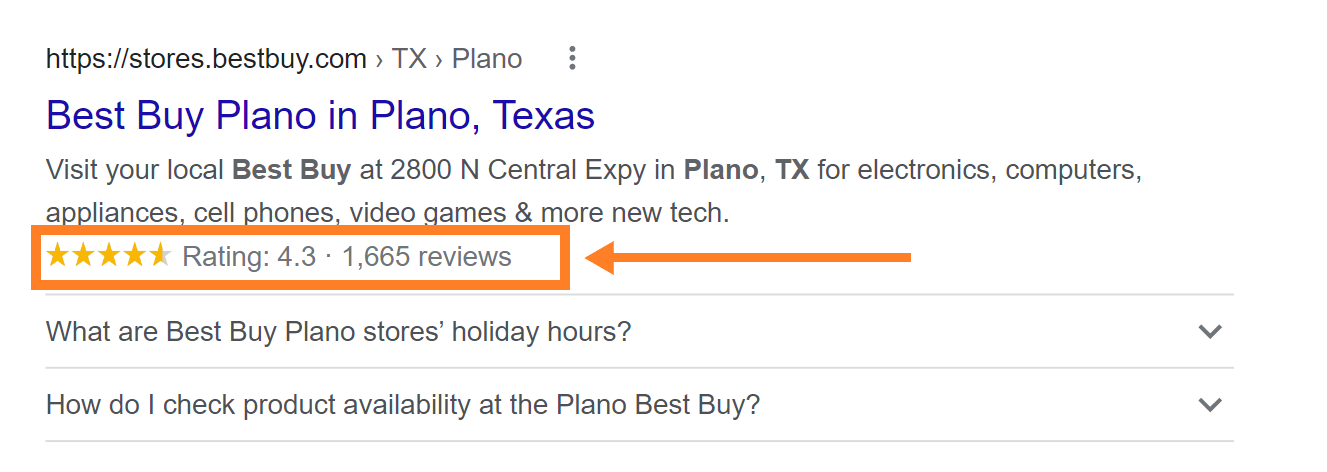Best SEO strategies for Affiliate Websites: How to Get Free Organic Traffic

SEO (Search Engine Optimization) makes or breaks an affiliate website. You can have great content, the best offers, and solid recommendations, but without traffic, none of that matters.
Organic search traffic is free, targeted, and long-term. That’s why mastering SEO isn’t optional. It’s the difference between earning commissions on autopilot and struggling to get clicks.
Most affiliate marketers mess this up. They spam keywords, ignore search intent, or chase quick hacks. Some rely too much on AI-generated content, thinking it’s “good enough.” Others skip proper site structure, slow down their pages with bloated designs, or forget about backlinks altogether.
I’ve seen it happen over and over. Google doesn’t reward sloppy SEO. It favors real value.
This guide breaks down the best SEO strategies for affiliate websites. You’ll learn how to rank higher, attract the right audience, and build authority.
We’ll cover keyword research, content optimization, backlinks, and technical SEO—all without overcomplicating things. If you want free organic traffic that actually converts, you’re in the right place. Let’s get into it.
“3 Months to No.1: The “No-Nonsense” SEO Playbook for Getting Your Website Found on Google” is my most recommended guide for this topic. Consider checking it out.
Key Takeaways
- SEO is a long game – Quick tricks don’t last. Focus on strong content, technical SEO, and solid backlinks.
- Content quality matters most – Evergreen, in-depth, and helpful content ranks and converts better than thin, keyword-stuffed pages.
- Backlinks build authority – Guest posting, the Skyscraper Technique, and HARO help earn high-quality links.
- Technical SEO can’t be ignored – Site speed, mobile responsiveness, structured data, and fixing crawl errors impact rankings.
- Google updates can wreck weak sites – Avoid black-hat tactics, thin affiliate pages, and keyword stuffing. Stay on Google’s good side.
- Data drives smart SEO decisions – Use Google Search Console, Analytics, and Ahrefs to track rankings, traffic, and conversions.
- SEO success means more than rankings – Traffic is useless if it doesn’t convert. Optimize pages to turn visitors into buyers.
Understanding SEO for Affiliate Websites
SEO is the foundation of long-term success in affiliate marketing and it is the best way to get consistent, free traffic to your affiliate site. Without it, you’re stuck relying on paid ads or social media—both of which are unpredictable and expensive.
Many beginners ignore SEO, thinking they can shortcut their way to success with ads. But the moment you stop paying, the traffic disappears. It’s like renting a house—you don’t own it, and once the lease is up, you’re out.
Social media has its own issues. Algorithms change constantly, organic reach drops, and your posts get buried under a flood of content. One day, a post goes viral. The next, it barely reaches anyone.
SEO, on the other hand, is reliable. Once your content ranks, it keeps bringing in visitors month after month. No ad budget is required, and your traffic doesn’t vanish overnight.
More importantly, organic traffic converts better. When someone searches for “best protein powder for muscle gain” and lands on your site, they’re already interested in buying. You’re not interrupting them with an ad—they’re actively looking for a solution.
That’s why focusing on SEO is one of the smartest moves you can make. It takes time, but once your content ranks, your traffic becomes predictable. Instead of constantly chasing visitors, your site attracts them naturally.
So, what does it take to rank?
Google doesn’t just hand out top spots. You need to focus on three things:
- Content: Answer real questions, solve problems, and provide value. Keyword stuffing won’t cut it.
- Backlinks: Quality links from other sites tell Google you’re trustworthy. The right links make a big difference to your website.
- Technical SEO: Site speed, mobile-friendliness, and structured data all matter. A slow site kills rankings.
Skip any of these, and you’ll struggle. But get them right, and organic traffic will do the heavy lifting for you. No ad spend. No constant hustle. Just steady, free visitors who actually want what you’re promoting. That’s the power of SEO.
I recommend checking out The Complete SEO checklist for 2025
Here are the Best SEO strategies for Affiliate Websites That Actually Work
1. Keyword Research for Affiliate Websites
Picking the right keywords can make or break your affiliate site. You can create the best content, but if no one is searching for it, it won’t bring traffic.
Many affiliate marketers make the mistake of targeting broad, high-competition keywords. These are dominated by big sites, making it nearly impossible to rank.
The smarter approach is to focus on low-competition, high-intent keywords—terms that people actively search for but major sites often ignore.
By targeting these overlooked keywords, your content has a better chance of ranking, bringing in steady organic traffic without competing against massive authority websites.
Finding High-Converting, Low-Competition Keywords
You don’t need a massive audience. You need the right audience. The trick here is to target buyers, not browsers.
Instead of chasing “protein powder,” which sounds more general, go for “best protein powder for weight loss.” Instead of “running shoes,” try “best running shoes for flat feet.” These are high-intent searches—people looking for solutions, not just information.
Low-competition keywords are gold. Big sites dominate short, broad keywords. But long-tail keywords—phrases with three or more words—are always easier to rank for and bring in targeted traffic. I’d rather get 500 monthly visitors ready to buy than 5,000 just skimming.
Long-Tail vs. Short-Tail Keywords for Affiliate Content
- Short-tail keywords (1-2 words) = High search volume, high competition, low conversion. Example: “protein powder.”
- Long-tail keywords (3+ words) = Lower volume, lower competition, higher conversion. Example: “best protein powder for beginners.”
If you go after short-tail keywords, you’re fighting giants. If you focus on long-tail, you carve out a niche and rank faster. Simple choice.
|
Short-tail Keywords |
Long-tail Keywords |
|---|---|
|
High search volume |
Low search volume |
|
Generic search intent |
Specific search intent |
|
Lower conversion rate |
High conversion rate |
|
High competition |
Low competition |
Recommended reading: How to Drive Organic Traffic to Your Affiliate Links Using Long-Tail Keywords
Best Keyword Research Tools
You don’t have to guess which keywords work. You just need to use the right tools. There are tons of keyword research tools out there, but these are my top picks that I have actually tasted and used.
- Ahrefs: Best for deep keyword data, competition analysis, and finding easy-to-rank keywords.
- SEMrush is great for keyword tracking, content ideas, and spying on competitors.
- Ubersuggest: beginner-friendly, free, and solid for quick keyword research.
- KWFinder: Best for finding long-tail keywords with low competition.
I personally use Ubersuggest the most due to its fair pricing, and also it shows keyword difficulty, traffic potential, and what’s already ranking. If a keyword looks promising but has weak results on page one, that’s a green light.
Mapping Keywords to Content Types
Keyword mapping basically means matching the right keywords to the right pages, helping search engines rank your site and users find what they need. It’s like giving Google a clear guide on what each page is about.

Not all keywords fit the same type of content. Here’s how to use them right:
- Best X for Y → Listicles (e.g., “Best laptops for students”)
- Review keywords → Single-product reviews (e.g., “Nike Pegasus 40 review”)
- Comparison keywords → Versus articles (e.g., “MacBook vs. Dell XPS”)
- How-to keywords → Guides and tutorials (e.g., “How to start affiliate marketing”)
Each keyword type serves a different purpose. Mix them up, and you’ll cover all angles—info seekers, comparison shoppers, and buyers ready to spend.
Keyword research isn’t just about rankings. It’s about attracting people who take action. Find the right keywords, match them to the right content, and traffic (and commissions) will follow.
2. On-Page SEO Optimization
On-page SEO helps search engines and readers understand your content. It’s more than just keywords.
A well-optimized page has a clear title, a clean URL, and strong internal links. Without these, even great content can struggle to rank. Small fixes like improving headings, adding structured data, and optimizing images can make a big difference.
Search engines reward well-structured content, and so do users. A page that’s easy to read, navigate, and engage with is more likely to rank—and convert.
Optimizing Title Tags, Meta Descriptions, and URLs
Your title tag is the first thing people see in search results. Make it clear, direct, and keyword-rich. If you’re writing about the best budget laptops, don’t just say “Best Laptops.” Say “Best Budget Laptops for Students (Top Picks & Reviews).” It’s specific and clickable.
Meta descriptions don’t directly affect rankings, but they drive clicks. Keep them under 160 characters and make them enticing.
Example:
Bad: We review laptops for students and share the best picks.
Good: Looking for an affordable laptop? These top-rated budget options offer speed, battery life, and value.
URLs should be short and clean. Avoid long, messy links full of numbers and random words.
Bad: yoursite.com/best-laptops-2023-top10-affordable-student-recommendations
Good: yoursite.com/best-budget-laptops
Short, simple, and focused.
Internal Linking Strategies to Boost Rankings
Google loves well-connected pages. So do users. Internal links help search engines crawl your site and keep readers engaged. Here’s how I do it:
- Link to related content naturally—don’t force it.
- Use descriptive anchor text (not just “click here”).
- Make sure every page has at least 2-3 internal links.
Example: If you’re writing about best protein powders, link to a related protein powder review. This keeps people on your site longer and spreads ranking power across your pages.

Using Schema Markup for Product Reviews and Comparisons
Schema markup makes your pages stand out in search results. Ever seen star ratings, prices, and product details under a search result? That’s the schema. If you run affiliate product reviews, you need this.

For reviews, using Review Schema helps display star ratings and summaries in search results, making them more appealing to users. For comparisons, Product Schema highlights key specs, helping search engines understand and present the content better.
Tools like Google’s Structured Data Markup Helper make adding schema easy. When implemented correctly, schema markup enhances visibility, increases click-through rates, and gives content a competitive edge in search results. If Google offers extra space in the rankings, it’s always worth taking advantage of it.
Image Optimization and Alt Text Best Practices
Images make content engaging, but if they’re not optimized, they slow your site down. And slow sites don’t rank.
- Compress images before uploading (use TinyPNG or ShortPixel). I recommend keeping it less than 100kb for better performance.
- Use descriptive file names. Instead of IMG12345.jpg, use best-budget-laptop.jpg.
- Always add alt text. It helps visually impaired users and boosts SEO.
Example:
Bad: alt=”laptop”
Good: alt=”Best budget laptop for students with long battery life”
Small changes, big results. Sounds interesting right?
On-page SEO isn’t that complicated, but it’s easy to overlook. Dial it in, and your rankings will move—sometimes faster than you expect.
3. Content Strategies for SEO Success
Content is the foundation of every successful affiliate business. You can do all the SEO tricks in the book, but if your content is weak, it won’t matter. Google rewards sites that provide real value, and visitors won’t stick around if your content feels thin, outdated, or generic.
Recommended reading: Why Valuable Content Wins in Affiliate Marketing (And How to Create It)
The goal is to create content that ranks well and stays relevant long enough to bring in consistent traffic. This means focusing on quality, choosing the right content types, optimizing for search intent, and keeping your content fresh.
Here’s how to do it right.
Creating High-Quality, Evergreen Content
Not all content holds its value over time. Some articles peak for a few weeks and then fade as trends change. Others continue to bring in traffic for months or even years. The difference? Evergreen content.
This type of content stays useful long after it’s published, meaning it keeps ranking and driving traffic with little maintenance.
To create evergreen content:
- Choose topics with long-term interest. Some niches change fast, but you can always find stable topics. Instead of “Best Phones of 2024,” go with “Best Budget Phones for Students.” The second will still be relevant years from now.
- Make it the best resource available. Answer every key question a reader might have. If they need to visit another site to fill in the gaps, you didn’t go deep enough.
- Format for readability. Even great content gets ignored if it’s hard to read. Use short paragraphs, clear subheadings, and bullet points where needed.
Recommended reading: How to Create Evergreen Content for Your Affiliate Business: 5 Simple Ways
Best-Performing Affiliate Content Types
Not all content converts. Some formats work better than others for affiliate marketing, especially when it comes to ranking and driving clicks.
Here are four that consistently perform well:
- Reviews – A good review isn’t just a list of specs. People want to know if a product actually delivers. Cover pros, cons, and who it’s best for. Add real-world use cases. If possible, include personal experience or user feedback.
- Comparisons – Readers love side-by-side comparisons when choosing between two similar products. A well-done “X vs. Y” post helps them decide. Focus on key differences like performance, pricing, and features, and be honest about which one is better for specific needs.
- How-To Guides – Step-by-step tutorials attract visitors searching for solutions. When done right, they also lead naturally to product recommendations. If you’re teaching someone how to build a home gym, linking to recommended equipment makes sense.
- Best Lists – “Top 10” or “Best of” lists generate traffic and conversions when they provide real value. The key is to go beyond generic descriptions. Explain why each product made the list and who it’s best for.
Incorporating NLP (Natural Language Processing) Keywords
Keyword optimization has changed. Google now understands search intent better than ever, so stuffing exact-match keywords isn’t enough. Instead, it’s about covering a topic naturally and using variations that reflect how people actually search.
Here’s how to do it right:
- Find related keywords by checking Google’s autocomplete suggestions, “People Also Ask” results, and tools like Ahrefs or SEMrush.
- Write conversationally. Instead of forcing awkward keyword phrases, use natural variations. “Best budget smartphones” can also be “cheap phones that work well” or “affordable smartphones under $300.”
- Answer user questions. If people search “Can this laptop run Photoshop?”—don’t just mention it in passing. Answer it clearly and directly in your content.
Maintaining a Content Update Schedule
Publishing isn’t the final step. Google prefers fresh, relevant content, so updating your articles regularly keeps them ranking higher. This is especially important for affiliate content since products, pricing, and recommendations change over time.
To keep your content competitive:
- Update old posts. Refresh outdated recommendations, fix broken links, and add new information. Even small changes can improve rankings.
- Track performance. Keep an eye on your top-ranking posts. If traffic drops, refresh the content before it loses its spot.
- Repurpose content. A long-form article can turn into several smaller posts, videos, or social media content. This extends its reach without creating everything from scratch.
A strong content strategy is about making sure your content stays useful, relevant, and optimized. Focus on quality, target the right topics, and keep your best content fresh. Do that, and SEO will work in your favor for the long haul.
4. Link Building Strategies for Affiliate Websites
Backlinks are one of the strongest ranking signals in SEO. A site with great content but no backlinks will struggle to rank, while a site with strong backlinks can outrank competitors even with similar content.
Google sees backlinks as votes of confidence. The more high-quality sites linking to you, the more authority your site gains. But not all links help. Low-quality or spammy backlinks can hurt more than they help.
Building the right links takes strategy. You need links from relevant, authoritative sites that actually drive traffic. Here’s how to get them.
Guest Posting and Niche Edits for Authority Building
Guest posting works because it benefits both sides. You provide valuable content, and in return, you get a backlink. But not just any guest post will do. Low-quality guest posts on irrelevant sites won’t help your rankings or authority.
Here’s how to do guest posting the right way:
- Find relevant sites. Look for blogs in your niche that accept guest contributions. A backlink from a trusted industry blog carries weight.
- Pitch useful content. Editors don’t care about your link. They care about their audience. Offer a topic that fills a gap or adds value.
- Write quality content. Don’t slap together a basic post just to get a link. Write something genuinely helpful, so the site owner actually wants to publish it.
Personally, I use guest posting regularly. It’s not about spamming every blog out there but about building real connections. When done right, guest posts don’t just improve rankings; they bring in direct traffic from readers genuinely interested in what I offer.
Niche edits (adding links to existing articles) work similarly. Instead of writing a new post, you reach out to site owners and suggest adding your link to an existing article where it naturally fits. It’s faster than guest posting and works well if your content adds real value.
The Skyscraper Technique to Get Quality Backlinks
Most people ask for backlinks the wrong way. They send generic emails begging for links, and most get ignored. The Skyscraper Technique flips the script.
Instead of asking for links to average content, you create something better than anything out there—then show people why they should link to you instead.
Here’s how it works:
- Find link-worthy content. Look for high-ranking pages with tons of backlinks in your niche. These are proven winners.
- Make something better. Add depth, update outdated info, include new data, or make it more visually appealing. Your content should be the best version available.
- Reach out to the right people. Find sites linking to the original piece and show them your improved version. Many will switch their links if your content is genuinely better.
I’ve used the Skyscraper Technique many times on my other sites, and it delivers.
The key is actually making something better—not just longer. When I see an outdated comparison post ranking well, I create a fresh, more detailed version. Then, I reach out to sites linking to the old post and show them mine. If my content is stronger, they have a reason to update their link.
HARO and Digital PR for Organic Link Acquisition
Some of the best backlinks come naturally when journalists or bloggers cite your content. This is where HARO (Help a Reporter Out) and digital PR come in.
- HARO connects you with journalists looking for expert sources. Sign up, watch for relevant queries, and respond with useful insights. If a journalist uses your response, you get a backlink from their article.
- Digital PR involves creating newsworthy content like industry studies, unique data, or controversial takes that journalists want to cover. If you give them something worth sharing, they’ll do the link-building for you.
Both methods require effort, but they build high-quality links that drive traffic and improve rankings. Unlike guest posts, these links often come from major news sites, giving your site serious credibility.
Backlinks matter, but quality beats quantity. One strong link from an authoritative site is worth more than a dozen weak ones. Guest posting, Skyscraper outreach, and HARO are all powerful ways to earn links naturally.
The key is providing real value: whether through content, insights, or useful resources. Do that, and the links will follow.
5. Technical SEO for Affiliate Sites
Technical SEO keeps your site fast, accessible, and easy for search engines to crawl. Without it, even the best content won’t rank well. It’s like having a great product but a broken storefront—customers (and Google) will turn away. Let’s go over what matters most.
Improving Site Speed and Mobile Responsiveness
Speed matters. If your site takes more than a few seconds to load, visitors leave. Google notices that and pushes your rankings down. Here’s what helps:
- Use a fast, reliable hosting service. Cheap hosting slows down your site. I use InterServer because it’s reliable, fast, and doesn’t throttle performance when traffic spikes. A slow site kills conversions, so I’d rather invest in quality hosting than lose visitors.
- Compress images. Huge image files kill load times. Tools like TinyPNG shrink them without ruining quality.
- Enable caching. This saves parts of your site so returning visitors don’t have to reload everything. Plugins like WP Rocket handle this automatically.
- Use a content delivery network (CDN). A CDN stores copies of your site in multiple locations, loading it faster for users worldwide. Cloudflare is a good free option.
- Make your site mobile-friendly. More than half of web traffic is mobile. A responsive design ensures your site adjusts to any screen size. Google’s Mobile-Friendly Test can tell you if your site passes.
If your site loads slowly and you’re losing visitors, then I highly recommend WP Rocket. It optimizes caching, reduces bloat, and speeds up your pages instantly with no tech skills needed.
Fixing Crawl Errors and Broken Links
If search engines can’t properly crawl your site, you’re losing rankings. Broken links and crawl errors act like roadblocks. Here’s how to fix them:
- Use Google Search Console. It shows crawl errors and pages Google struggles to index.
- Fix broken links. A broken link leads nowhere, frustrating users and hurting SEO. I use tools like Screaming Frog or Broken Link Checker to find and replace them.
- Check for redirect chains. Too many redirects slow your site. If Page A redirects to Page B, which then redirects to Page C, it’s a problem. Keep redirects simple.
Implementing Structured Data for Better Search Visibility
Structured data (or schema markup) helps Google understand your content better. It can also give you rich snippets—those extra details in search results that make your page stand out.
- For reviews, use schema markup. If you review products, adding a review schema can display star ratings right in search results. This increases clicks.
- For comparisons, use table schema. If you’re comparing products, structured data helps Google format your content properly.
- Use Google’s Rich Results Test. After adding schema, this tool checks if it’s working correctly.
Using XML Sitemaps and Robots.txt Correctly
Search engines need a roadmap to navigate your site efficiently. XML sitemaps and robots.txt files help with this.
- Submit an XML sitemap. It tells Google which pages to crawl. Most SEO plugins, like Rank Math or Yoast, generate one for you.
- Use robots.txt wisely. This file tells search engines what NOT to crawl. Blocking unnecessary pages (like admin pages) improves crawl efficiency.
- Check for errors in Google Search Console. If Google can’t access important pages, your rankings suffer. Make sure your robots.txt isn’t blocking the wrong content.
Technical SEO isn’t exciting, but it’s necessary. A fast, error-free site gets more traffic and ranks higher. Get these details right, and Google will have no trouble understanding and ranking your content.
6. Avoiding SEO Pitfalls in Affiliate Marketing
Many affiliate marketers don’t fail because they pick the wrong niche or product. They fail because they ignore SEO fundamentals. Google is not in the business of ranking low-quality, thin content. If your site looks like a cash grab, it won’t last.
I’ve seen affiliate sites vanish overnight after an algorithm update because they relied on shady tactics. Others struggled for months because they stuffed their pages with keywords or copied product descriptions. SEO mistakes are easy to make but hard to recover from.
If you want long-term rankings and organic traffic, you need to avoid common traps. Let’s break down the biggest SEO mistakes in affiliate marketing and how to steer clear of them.
a). Duplicate Content and Thin Pages
Affiliate sites often make the mistake of publishing the same content as dozens of others. If you copy product descriptions from Amazon or the manufacturer, Google won’t rank your page because it already has that content. Even rewriting the same generic information won’t cut it.
Your content needs to add real value. That means unique insights, in-depth comparisons, and personal experience. I always ask: If I were searching for this product, would this page help me make a decision? If the answer is no, I add more detail, answer more questions, and make the content more useful.
b). Keyword Stuffing and Over-Optimization
SEO is about helping search engines understand your content, not forcing keywords where they don’t belong. I’ve seen people repeat the same keyword five times in one sentence, thinking it will boost rankings. It won’t. It just makes content unreadable.
Google’s NLP (Natural Language Processing) technology understands related terms. Instead of forcing “best budget laptops” everywhere, mix it up, like you can talk about “affordable notebooks,” “cheap laptops for students,” or “top low-cost computers.” It sounds natural, keeps readers engaged, and still tells Google what your page is about.
c). Avoiding PBNs and black-hat SEO tactics
Some affiliate marketers try to game the system by buying backlinks or using Private Blog Networks (PBNs). It might work for a while, but Google is ruthless. When they catch on, rankings disappear, and sometimes the entire site gets deindexed.
Building real authority matters. Guest posting and the Skyscraper Technique are effective for earning high-quality backlinks.
These strategies take effort, but they deliver lasting results. Strong links improve rankings and build trust without risking penalties.
How Google’s algorithm updates affect affiliate sites
Google constantly updates its algorithm to filter out low-quality sites. Affiliate sites get hit the hardest, especially if they rely on spammy tactics or thin content.
The best way to survive updates is to build a site like a real business. Create expert-level content, follow white-hat SEO practices, and focus on user experience. Every update rewards sites that genuinely help users and punishes those that cut corners.
SEO isn’t a loophole or a shortcut. It’s about earning your spot in search results. Avoid these mistakes, focus on real value, and your site will keep growing no matter how many updates Google rolls out.
7. Measuring and Tracking SEO Performance
If you’re not tracking your SEO, you’re flying blind. Guessing won’t work. You need hard data to see what’s working and what’s not. This isn’t about checking rankings once in a while but about understanding your traffic, conversions, and what actually drives results.

The Best SEO Analytics Tools
I personally rely on a few key tools to track performance. Google Search Console shows how Google sees your site—click-through rates, indexing issues, and which pages get traffic.
Google Analytics tells you who’s visiting, where they’re coming from, and how they interact with your site. For deeper insights, use Ubersuggest to track backlinks, keyword rankings, and competitor data. Each tool gives a different piece of the puzzle.
Tracking Keyword Rankings and Organic Traffic
Watching rankings alone isn’t enough. A keyword hitting page one means nothing if it’s not bringing clicks. Focus on organic traffic growth—how many visitors come from search, what pages drive the most traffic, and how people move through the site.
If a page loses traffic, dig into the data. Did rankings drop? Did search intent change? Did a competitor outrank me? Data tells the story.
Analyzing Conversion Rates from SEO Traffic
Traffic is useless if it doesn’t convert. Track how many visitors take action by clicking affiliate links, signing up for emails, or making purchases.
If a page gets tons of traffic but few conversions, something’s off. Maybe the content doesn’t match what users expect. Maybe the CTA isn’t clear. SEO isn’t just about ranking but also about turning visitors into buyers.
Without tracking, you’re guessing. With data, you can make smart decisions, double down on what works, and fix what doesn’t.
Conclusion
If you want free organic traffic, SEO isn’t optional—it’s the backbone of a successful affiliate site. The right strategies help you rank, attract the right audience, and drive conversions without paying for ads.
Focus on solid keyword research, on-page optimization, and high-quality content that actually helps users. Build backlinks the right way, stay on top of technical SEO, and track your progress so you know what’s working.
SEO isn’t about shortcuts. Put in the effort, stay consistent, and your site will grow into a long-term income source. Start today: optimize your pages, improve your content, and take small, actionable steps. The results won’t come overnight, but with time and persistence, you’ll see real, lasting growth.
Frequently Asked Questions
How long does it take to see SEO results for an affiliate site?
SEO isn’t instant. Expect noticeable results in 3–6 months, depending on competition and effort. New sites take longer, while established ones can improve faster with proper optimization. The key is consistency—keep publishing quality content, building backlinks, and refining your strategy.
What’s the best way to find high-converting keywords?
Start with Google Keyword Planner, Ahrefs, or SEMrush to identify keywords with solid search volume and buyer intent. Long-tail keywords often convert better because they attract users closer to making a purchase. Also, check the “People Also Ask” and related searches on Google for additional ideas.
Do I really need backlinks to rank?
Yes. Backlinks signal trust and authority to Google. Without them, ranking for competitive keywords is tough. Focus on guest posting, niche edits, HARO, and the Skyscraper Technique to earn quality links. Avoid spammy tactics—Google’s penalties aren’t worth the risk.
How do I prevent my affiliate content from looking “thin” to Google?
Write genuine, in-depth reviews instead of generic, rehashed product descriptions. Add personal insights, pros and cons, real comparisons, and unique data. Support your content with images, videos, and FAQs to make it more useful. Thin content gets ignored, but value-packed content ranks.
What’s the biggest SEO mistake affiliate marketers make?
Chasing shortcuts—keyword stuffing, PBNs, AI-spun content, or buying shady backlinks. These might work short-term but will eventually tank your rankings. Instead, build a site that genuinely helps users. Google rewards real value, and that’s what keeps traffic flowing long-term.







Wow amazing blog layout How long have you been blogging for you made blogging look easy The overall look of your web site is magnificent as well as the content
I have been blogging for over 5 years now. Thank you